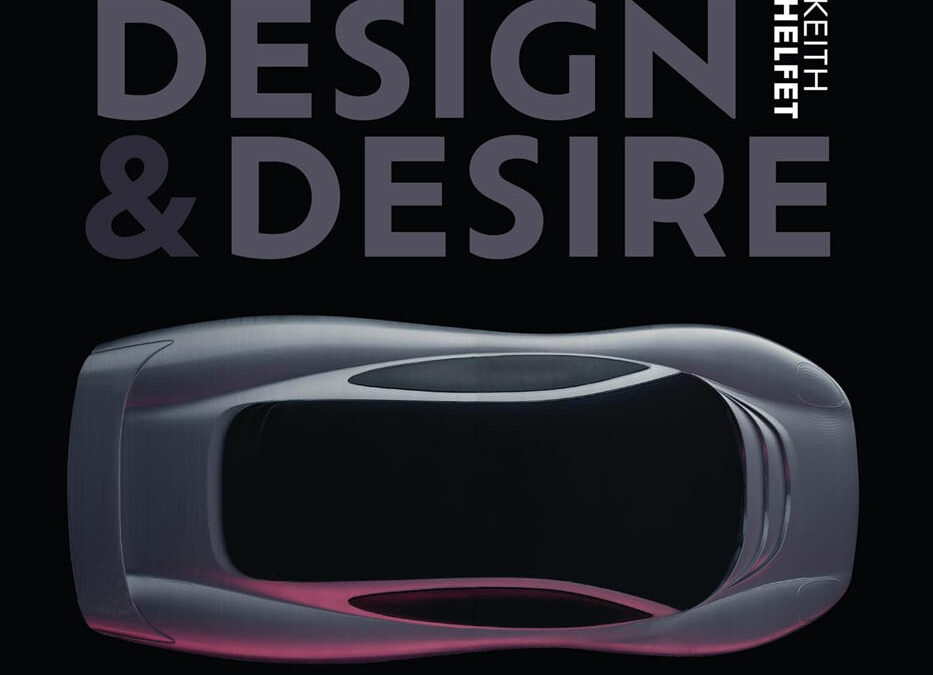
When Keith Helfet embarked upon an ambitious project to create a new body shape for a secondhand Triumph Spitfire using little more than foam offcuts and plaster of Paris, a life as one of the world’s most successful automotive designers seemed like an impossible dream. And yet that’s precisely what he would become.
After studying at London’s prestigious Royal College of Art, the South-African born youngster secured a job at Jaguar, where he would meet his mentor – marque founder Sir William Lyons. Thanks to his encouragement and guidance, Helfet would go on to create a number of iconic designs such as the XJ220 supercar, the XK180 and the beautiful F-type concept created in 2000.
With diversions into medical imaging, product design, power-assisted bicycles and electric vehicles, Design & Desire offers a personal insight into a unique and varied career that has spanned more than four decades – and counting…
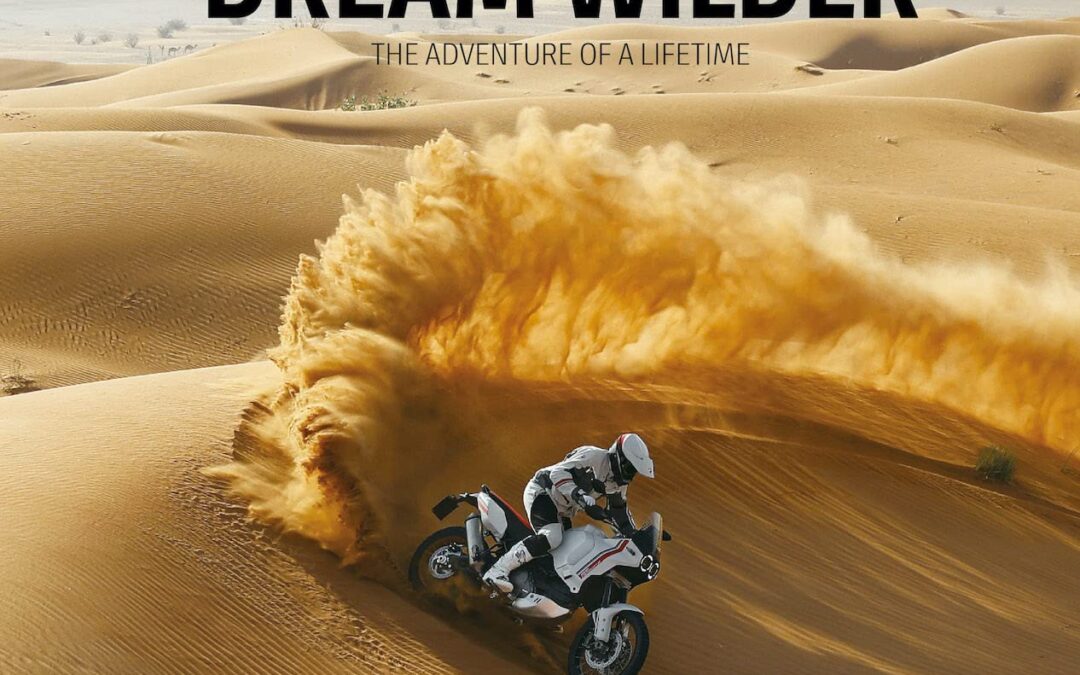
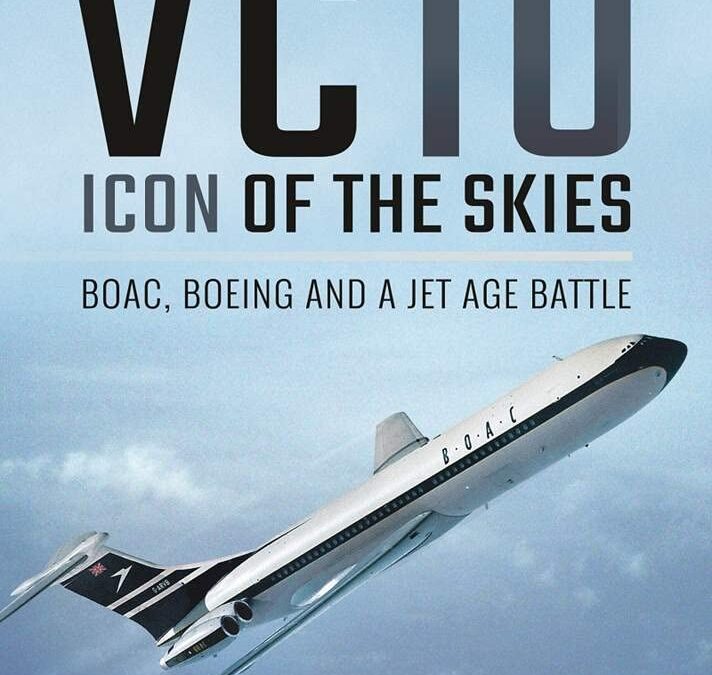
Other books have charted the VC10 in airline life, but this book blends that story with a well-researched tale of corporate and political power play. It asks; just what lay behind the sales failure of the VC1O?
Politics played an important part of course, as did BOAC’s tactics, and a ’who dunnit’ cast of politico-corporate events and machinations at the highest level of society during the dying days of Empire in 1960s Britain. Key players in the story, from Tony Benn to famous test pilot Brian Trubshaw (Concorde), are cited and quoted.
The VC10 was the nation’s biggest jet airliner of its age and regarded as the world’s best looking airliner. It was safe, fast, and designed to take off from short runways in Africa and Asia, at the request of its main operator BOAC – the airline that would later go on to become today’s British Airways.
The VC10 and the larger Super VC10 were beloved by pilots and passengers alike and became icons of the 1960s. They were hugely popular all over the world; East African Airlines made its name with Super VC10s, and so too did Freddie Laker with his famed VC10 fleet.
Yet the VC10 was eclipsed by Boeing’s 707 which sold by the hundreds, despite the fact that the 707 was less capable and could not initially operate from the runways of the Commonwealth and old British Empire routes, as the VC10 undoubtedly could.
The men of the Vickers Company who created the VC10 would later go on to engineer Concorde and, of course, the rest is history. But the era of the VC10 was pivotal and, by exploring this historical period in depth and highlighting all the various impediments that stood in the way of success for the VC10, Lance Cole adds an important layer to our understanding of twentieth century history.

When Philip Kohler left his native South Australia in 1955, his sights were firmly set on the UK, yet his continued appetite for travel eventually led him to Northern Rhodesia – a move that would ultimately see him fulflil a deeply held desire to complete a solo crossing of the Sahara desert.
With only his thoughts and the mechanical outpourings of his Series II Land Rover for company, Kohler spent three years traversing his way across a remarkable continent that was in the midst of revolution and change – documenting his journey with his trusted Leica camera – before arriving back in London in the latter half of 1962.
The adventure provided not just new experiences, but also shaped the rest of his professional life – his photographic ability, as well as a chance encounter with John Wayne, resulting in a hugely successful career in the international film industry. Lavishly illustrated with the beautiful photographs that he took along the way, and written by award-winning author Martin Port, this new book from Porter Press International tells the story of Philip Kohler and his trans-African Land Rover.
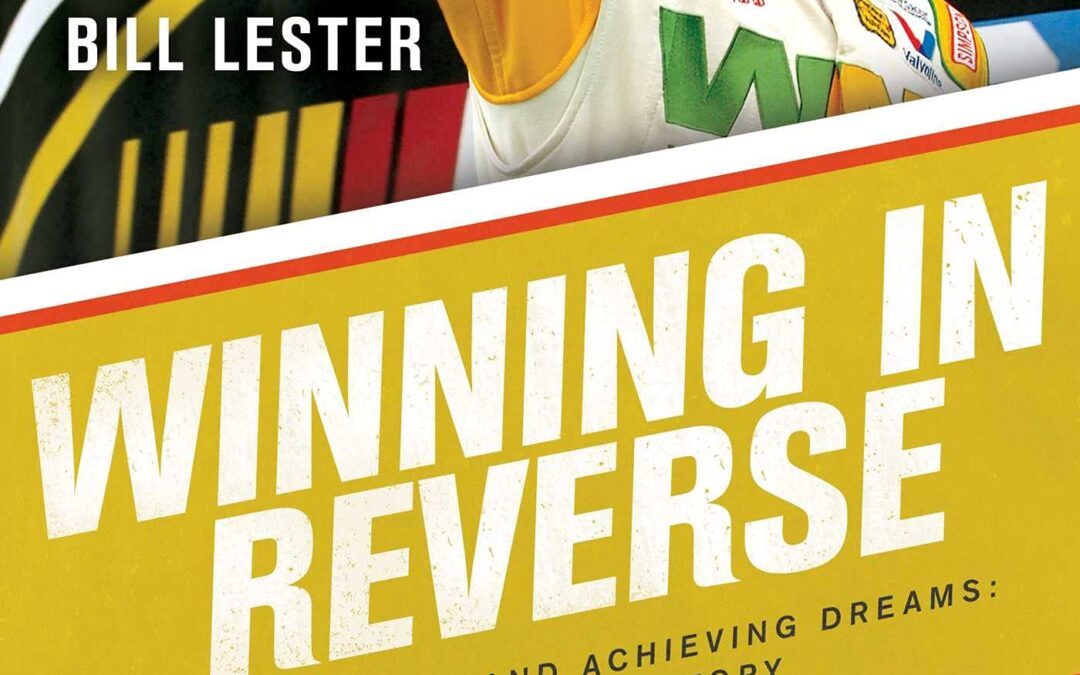
The amazing and dramatic story of Bill Lester, one of the most well-known NASCAR drivers in history—and a pioneer whose determination and spirit has paved the way for a new generation of racers.
Winning in Reverse tells the story of Bill Lester whose love for racing eventually compelled him to quit his job as an engineer to pursue racing full time. Blessed with natural talent, Bill still had a trifecta of odds against him: he was black, he was middle aged, and he wasn’t a southerner.
Bill Lester rose above it all, as did his rankings, and he made history time and time again, becoming the first African American to race in NASCAR’s Busch Series, the first to participate in the Nextel Cup and the first to win a Pole Position start in the NASCAR Craftsman Truck Series.
Whether you are contemplating a career or lifestyle change, challenging social norms, or struggling against prejudice or bigotry, Winning in Reverse is a story for sports fans and readers everywhere about the power of perseverance in the face of adversity.
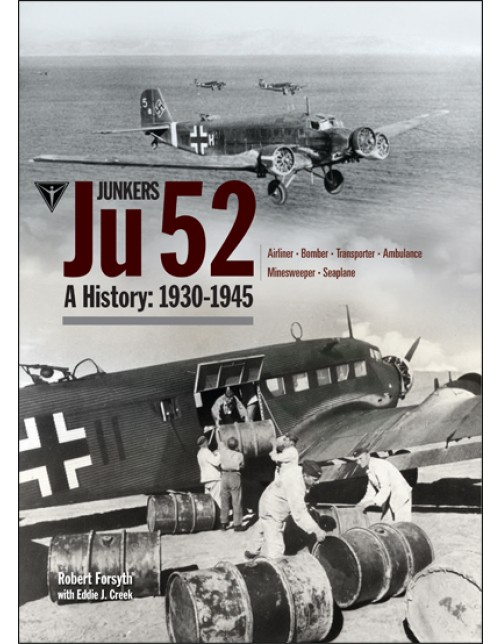
As with the other recent books in this series, this Classic study of the Ju 52 offers the most definitive account published in recent years of this bulwark of the Luftwaffe, which first saw military service in the 1930s and was then engaged in operations in the Spanish Civil War through the end of World War II.
The all-metal, three engine Ju 52/3m enjoyed a solid reputation among its crews and the troops and paratroops who used it and depended on it. It is a machine synonymous with the images of the German attacks on Holland and France in 1940 and Crete in 1941 when hundred of “Tante Jus” were used to drop paratroopers to successfully capture key tactical and strategic areas.
The full history, however, goes back much further. Built as a passenger aircraft for Deutsche Lufthansa, the Ju 52 ranges as far as South Africa, Mozambique, India and Latin America, as well being operated by several other European countries such as Belgium, Equador, Peru and Uruguay. Britain operated several Ju 52s.
The aircraft was first blooded in the Spanish Civil War, where it was pressed into service as a crude, but effective, bomber with the Legion Condor. From then on the Luftwaffe deployed it on every battle front in the West, in the Mediterranean and in the East. An example also flew in Iraq. The Ju 52 served as a stalwart transport, often operating in the most hostile conditions, with ice or dust, lifting men, animals, food, supplies, ammunition, mail, and spare parts vital for German military operations, such as the North African supply routes at Demyansk, Stalingrad and also in the Ardennes in 1944. It was also converted into the ambulance and mine-hunting roles, and was adapted as a seaplane. After the war, the Ju 52 flew on as late as the 1980s, testimony to its strength and reliability.
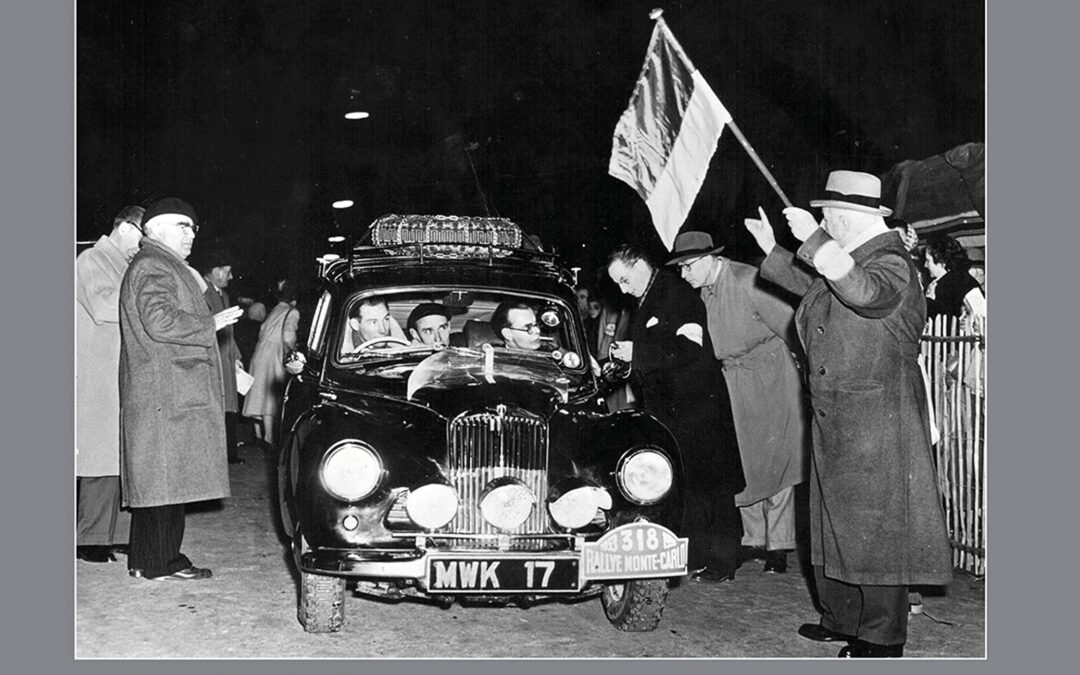
Best known for his extraordinary skills at the wheel of racing cars, Stirling Moss was also an extremely effective rally driver. He entered many rallies from the early 1950s on, usually achieving top ten results in a variety of makes, initially Sunbeam-Talbot and in later years Mercedes-Benz, Jaguar, Aston Martin and Saab.
He very nearly won the Monte Carlo Rally at his first attempt in 1952, losing only narrowly to Sydney Allard, and then went on to join the exclusive club of rally drivers who won a coveted Coupe d’Or on the Alpine Rally, one of the toughest events in the calendar.
His contribution to pace notes, based on the technique used in his astounding Mille Miglia win with Denis Jenkinson, is told here, together with his abortive attempt at the East African Safari Rally with his brother-in-law, Eric Carlsson. Africa was not kind to Moss – he nearly died on another rally when stranded in a remote part of the Sahara Desert and was lucky to be rescued.
The cars he drove, the teams, the co-drivers, all are covered in this record of the amazing and often overlooked rally driving career of the legendary Stirling Moss.
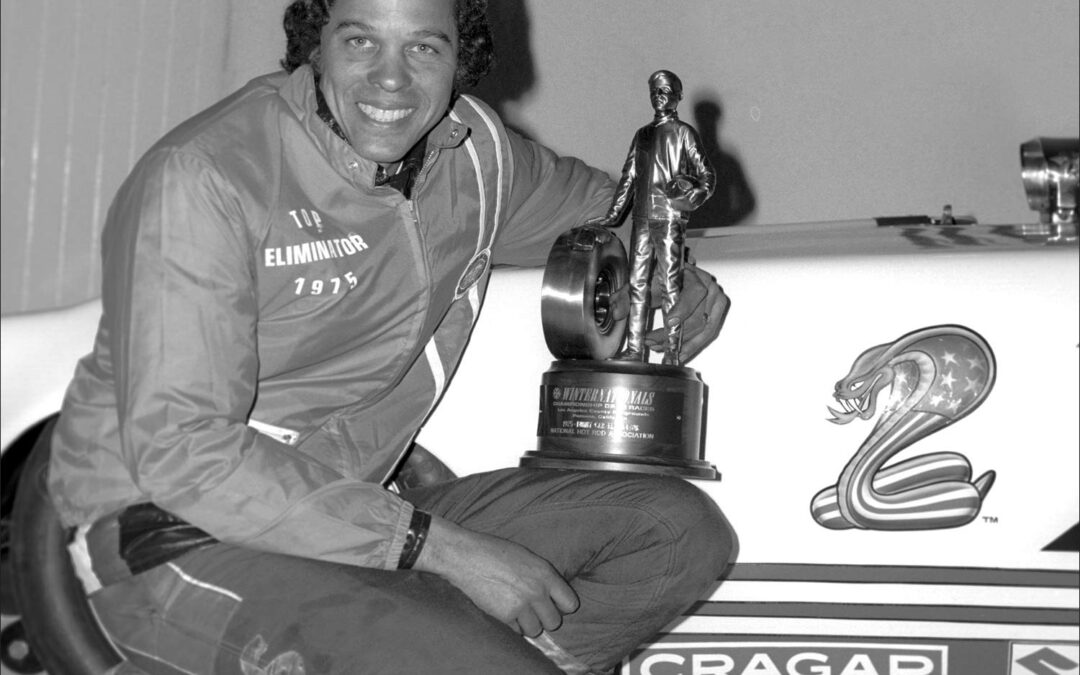
Don “The Snake” Prudhomme reveals for the first time ever his incredible life and career on and off of the drag strip.
Imagine spending a year with Don “The Snake” Prudhomme, having coffee together and talking about his life, his racing, his friends, and his family. He’d tell you about how he rose from being a high school drop-out who was painting cars to a respected Top Fuel dragster driver and successful businessman. You’d hear how he toured the country with Tommy Ivo and “The Hawaiian” Roland Leong, racing all the legends from “Big Daddy” Don Garlits to “The Golden Greek” [Chris] Karamesines.
He’d say how he met Tom McEwen and recall how they became the Snake and the Mongoose, leading to a career in Funny Cars that netted him four championships in a row. He’d talk about the thrill of first wins and owning his own teams but also the struggles of bad seasons, crashes and fires, broken parts, and broken contracts. Along the way, he’d speak about the people in his life, such as engine-builder Keith Black and NHRA president Wally Parks, and those who were killed in the wild and unpredictable sport of nitro racing.
It wouldn’t be only racing, though. Prudhomme would share lessons he learned about business and life from such varied sources as a neighbor in Granada Hills to Ford GT40 driver Dan Gurney. He also would talk about the importance of family: how his wife, Lynn, and daughter, Donna, changed his world and how finding out about his African-American roots opened his eyes to a culture and inheritance he’d always wanted.
This is the experience you’ll get in Don “The Snake” Prudhomme: My Life Beyond the 1320.

Inspiration and expert advice for planning and driving road trips around the world – including 50 suggested routes
Road Trip: A Practical Manual is aimed at inspiring readers to take a road trip, while providing practical advice to help them to do so. Whether looking at popping over to Europe for a quick circuit, hankering to drive the classic routes of North America, or even aiming to cover a clutch of African countries, there is something for everyone. Importantly, every road trip featured is possible without specialist equipment and, indeed, each and every trip could possibly be completed in a hire car – though for a select few a four-wheel drive hire vehicle would be advisable.
The author offers a wealth of advice from his experience taking road trips around the world. From hiring cars and paperwork, to what to take, driving laws, crossing borders and emergencies, the engaging text aims to give the reader confidence to fulfill his/her dreams.
The second part of the book provides a wide range of route suggestions, based on the author’s own experiences on six continents. Road Trip: A Practical Manual is a fascinating guide, which will, hopefully, inspire readers to turn their independent travel dreams into reality.
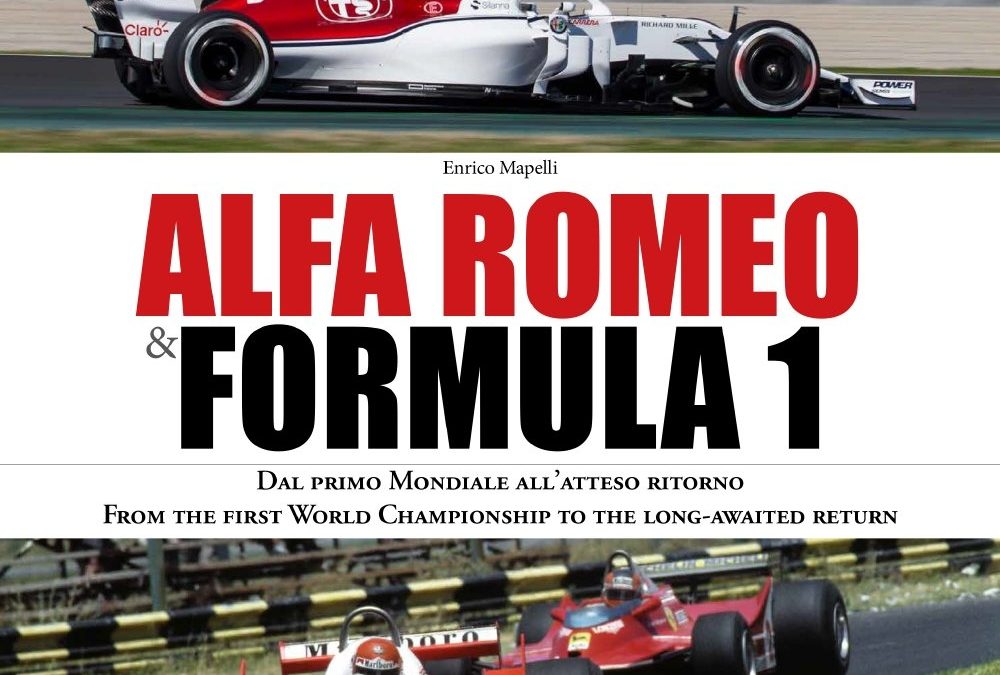
The story returns, with new chapters and prospects about to unfold. The agreement between Sauber and Alfa Romeo brings back to the World Championship stage a name that for so long was an integral part of Formula 1 series. Going back to the 1950 and 1951 seasons, the championship was bathed in the red of the Portello’s cars. Then came the eras of Chiti, Autodelta, the partnership with Brabham and then the Biscione marque’s return to F1 with the Alfa-Alfa. This book contains all this and much more, including the two seasons in the early Seventies with McLaren and March, the premature implosion of the agreement with Ligier, the sporadic appearances, especially of South African drivers, at the wheel of cars powered by an Alfa Romeo engine. The story is comprehensively illustrated with hundreds of colour and black and white images, many previously unpublished, and a list of all the results obtained by Alfa Romeo in Formula 1.
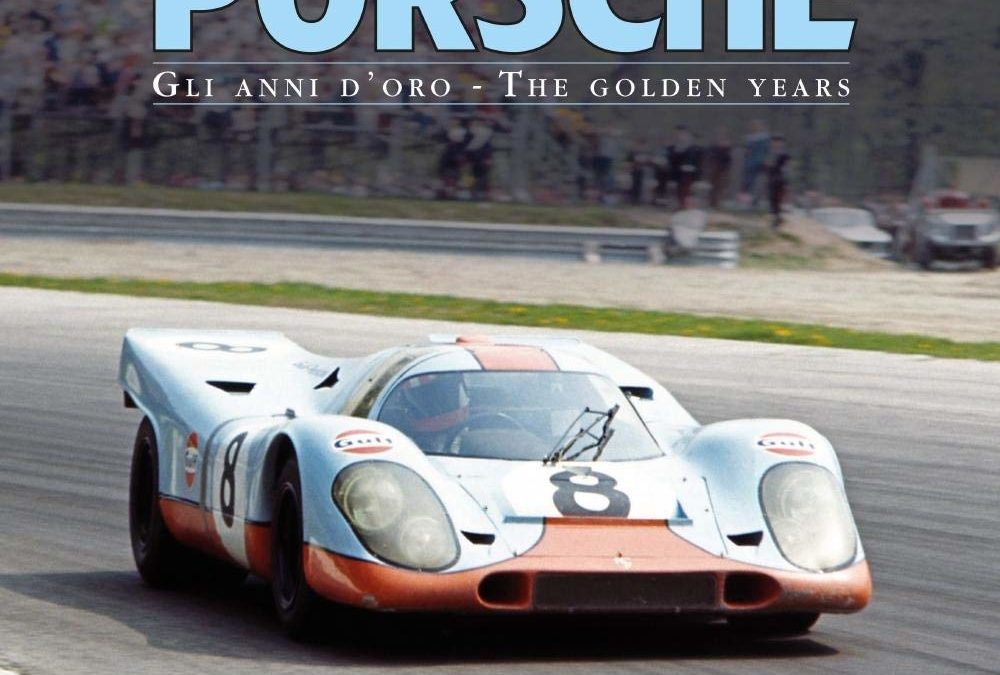
Iconic cars such as the 356s and the immortal 911s, extraordinary success stories in the classic endurance races, great champions and remarkable engineers. These are the principal ingredients of Porsche: The Golden Years, a book examining the full history of the legendary Stuttgart firm, with spectacular and previously unpublished images by photographer Franco Villani. The Porsche 356, with both closed and open bodywork, was the model that in 1948 officially inaugurated the catalogue of the celebrated Stuttgart firm. In that difficult period of reconstruction, Dr. Ferdinand Porsche, artificer of the car and founder of the marque, was already an undisputed authority in the automotive field for having designed the Volkswagen Beetle, the people’s car. The Porsche 356s were “legitimate offspring” of the Beetle and soon found favour with the public: they were sporting cars that were easy to use in everyday life. This is the true Porsche “DNA”, confirmed with the launch of the 901, or rather the 911 that first saw the light of day in 1963, a model that soon became a planetary success story, a car capable of traversing the decades while maintaining intact its appeal. The Porsche name also evokes the innumerable victories obtained in legendary endurance races such as the Le Mans 24 Hours and the Targa Florio, in the World Rally Championship and in the great African raids such as the Paris-Dakar, as well as in Formula 1 as an engine supplier to McLaren in the early ‘80s.
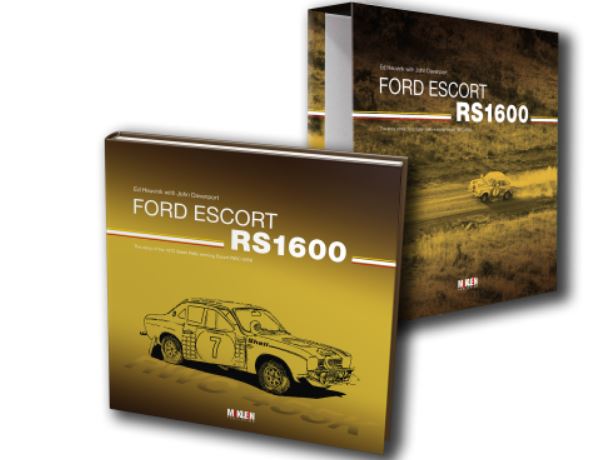
The story of the 1972 Safari Rally winning Escort RWC 455K
Rally cars do not make history every day but one that did hit the headlines was the Escort RS1600 that won the East African Safari Rally in 1972. For twenty years, the Safari had been won by drivers from within the East African community and this was despite all attempts by the European rally hierarchy to change that. Acknowledged as the World’s Toughest Rally, the Safari had attracted works teams and works drivers right through the 1960s. They had often led the rally at some point, but never won it. Incredibly, even in teams where there were European and East African drivers in equal machines, it was always a local crew that won through to victory at the finish.
In 1972, this challenge was finally overcome when Hannu Mikkola and Gunnar Palm won the Safari in a works-prepared Escort RS1600.
The actual car that accomplished that achievement is the subject of this book. The whole story is told from Ford’s first involvement in rally sport through the creation of their own specialist competition department, and how Ford cars fared on rallies in general and on the Safari in particular. The development of the Escort from its Twin Cam beginnings through to the preparation of the works cars for the 1972 Safari is followed by a detailed account of the 1972 rally itself.
The back-story to the creation of this book is that this car, the most famous of Escort rally cars, is now in the N-Anadol Collection in Switzerland. Two cars from this unique collection of original Ford competition vehicles have been the subject of books commissioned by their owner. These have been written by the well-known Dutch author of motoring books, Ed Heuvink, and published by McKlein and now this Safari Escort book joins similar volumes on the original Ford GT101 and the Ford P68 sports car.
The original pairing from 1972 – Hannu Mikkola and Gunnar Palm – supplied the foreword to this lavishly illustrated book.
Technical details:
Author: Ed Heuvink with John Davenport
Foreword: Hannu Mikkola and Gunnar Palm
Format: 29 x 29 cm, hardcover in a slipcase
Pages: 158
Pictures and illustrations: ca. 80 in colour and 110 in black-and-white
Language: English
Limited edition of only 999 copies
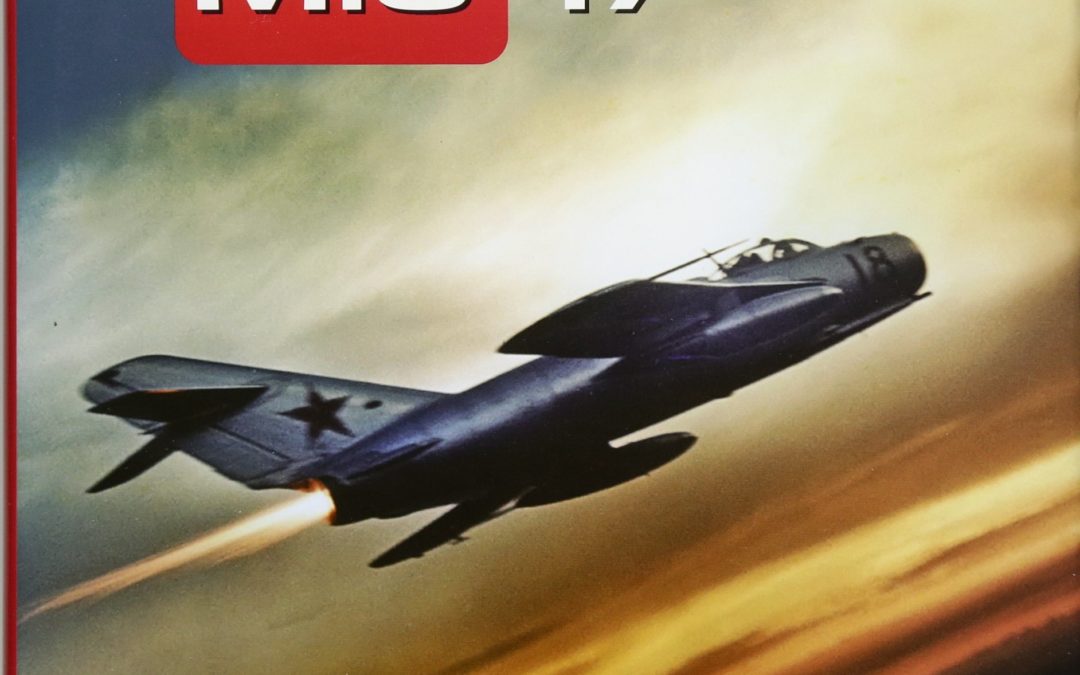
The Mikoyan Design Bureau’s first swept-wing jet fighter, the MiG-15 Fagot, which gained world fame (or notoriety, depending on which side of the Iron Curtain you were on) after the Korean War, served as the basis for a more refined model, the MiG-17 Fresco. No sooner had the MiG-15 entered production and service than the designers decided to increase the wing sweep from 35 degrees to 45 degrees, initially by way of experiment. The resulting aircraft showed higher performance than the MiG-15, exceeding Mach 1 in a shallow dive during a test flight, something the Fagot had been unable to do.
Following its production entry the MiG-17 was constantly improved, with Mikoyan developing a succession of production and experimental versions. Firstly, an afterburning engine was fitted to improve performance. Secondly, the increasingly frequent incursions by NATO reconnaissance aircraft, coupled with the knowledge that the West was developing all-weather fighters, led the Soviet ‘fighter makers’ to develop a number of radar-equipped interceptors. The all-weather versions of the MiG-17 proved to be the most successful and some of them were cleared for production.
Starting in the mid-1950s, the MiG-17P, MiG-17PF and MiG-17PFU (the latter version was armed with air-to-air missiles) were the most widespread interceptors in the Soviet Air Defence Force for the nearly two decades.
The MiG-17F day fighter was widely exported and saw a good deal of fighting, receiving its baptism of fire in the Middle East where Egyptian Frescos were pitted against Israeli Dassault Mystère IVs. However, the type became really famous after the Vietnam War where it successfully opposed the supersonic McDonnell F-4 Phantom II and other US aircraft.
Being displaced from first-line fighter service by more modern types, the MiG-17 and MiG-17F found use as a fighter-bomber–both at home and abroad. The MiG-17F and MiG-17PF saw service with nearly all Warsaw Pact nations, as well as many Asian and African countries and Cuba.
The book fully describes the MiG-17’s development history and charts the type’s combat operations in various major wars and local conflicts. A separate chapter also compares the MiG-17 and its foreign counterparts and the book concludes with details of MiG-17 fleets and operators worldwide.
lllustrated with many unique photos, color side views, line and cutaway drawings this latest addition to the Famous Russian Aircraft series forms a details record of the type and will appeal to modelers and historians alike.
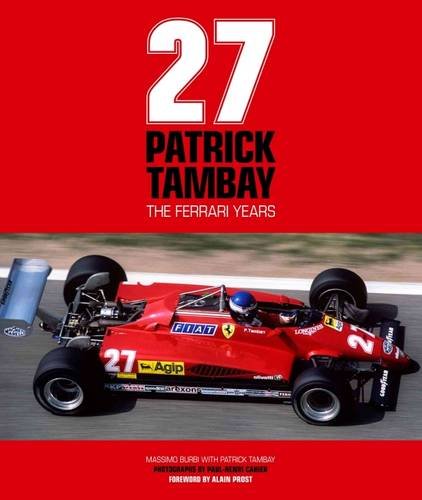
This is the emotional story of Patrick Tambay’s rollercoaster Formula 1 ride with Ferrari. The saga began in 1982 with the tragedy of his friend and fellow driver Gilles Villeneuve’s death in the Belgian Grand Prix at Zolder and then unfolded as Tambay took Villeneuve’s place in car number 27, achieved race victories and, as the 1983 season developed, fought for the World Championship. Told in 27 chapters, this is a tale not only of Formula 1 in those colourful years but also a rare and revealing account of life inside Maranello in the twilight of the Enzo Ferrari era, supported by magnificent photographs by Paul-Henri Cahier.
– British GP, 1982: at Brands Hatch Tambay’s second race for Ferrari brings his first-ever podium finish, in his 51st Formula 1 start.
– German GP, 1982: after team-mate Didier Pironi’s career-ending crash during practice at Hockenheim, Tambay lifts his sombre Ferrari team with his first Formula 1 win.
– Italian GP, 1982: in front of Ferrari’s emotional home crowd at Monza, Tambay finishes second, with the great Mario Andretti, his team-mate for this one race, behind him in third place.
– San Marino GP, 1983: Tambay delivers exactly what the Scuderia’s fans desire – victory at Imola for the number 27 Ferrari 12 months after Gilles’s last race.
– South African GP, 1983: Tambay’s farewell race for Ferrari sees him on pole position (his sixth front-row start in seven races), but a mechanical failure denies him any chance of a final victory.

Brian Redman is one of very few notable British racing drivers whose racing life has yet to be put on record in book form. Now that is about to be rectified. Packed with photographs, Redman’s memoir is a vivid account of his varied racing exploits, with special focus on the period when he won major sports car races in Ford GT40s, Porsche 908s and 917s, and Ferrari 312PBs, and also became North American Formula 5000 champion three years running. Highly readable, and at times both humorous and poignant, this is a very personal book that will be welcomed by this popular and highly respected driver’s legions of fans.
– Five themed chapters about Redman’s experiences at the greatest circuits and races of his era: Spa-Francorchamps, the Nurburgring, the Targa Florio, Le Mans and Daytona.
– Diving deep into Redman’s fears, friendships and mindset during his time at the top.
– Spa-Francorchamps: Redman won at this daunting track in four consecutive appearances in 1,000Kms races for sports cars, but was also injured in the first of his three big crashes, in the 1968 Belgian Grand Prix.
– The Nurburgring: two big sports car wins with his greatest driving partners, Jo Siffert and Jacky Ickx.
– The Targa Florio: in 1970 Redman won this heroic race over the uniquely punishing 45-mile circuit in Sicily – and suffered severe burns in another big crash the following year.
– Le Mans: he led France’s 24-hour classic five times but never won it.
– Daytona: the world’s other great 24-hour race, in Florida, brought three wins – in 1970, 1976 and 1981.
– Stories about driving for Porsche, Ferrari and colourful privateers, plus anecdotes about the era’s most famous drivers, managers, heroes and rascals.
– Successes in Formula 5000 (three-times champion in the USA) and 2-litre sports cars (South African champion) complete Redman’s credentials as one of the finest all-rounders in motor racing.
– Mario Andretti provides an insightful foreword: Redman and he were team-mates in Ferrari’s sports car team (1972-73) and the top drivers in North American Formula 5000 (1974-75).
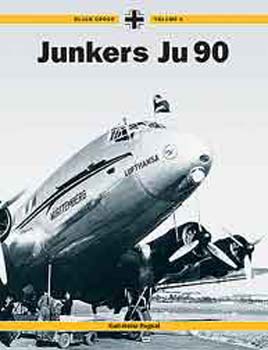
In the mid-1930s, contracts were placed with Dornier and Junkers for prototype four-engined strategic bombers. The Junkers aircraft, the Ju 89, was by far the better of the two. However, the program was abandoned in 1937 and Junkers used parts designed for the Ju 89 to construct a new civilian type for Lufthansa. The wings, tail and engines of the Ju 89 were added to a new fuselage to create the Ju 90.
The 40-passenger aircraft flew for the first time in August 1937 and entered Lufthansa service in 1938. A production batch of 10 aircraft were ordered. Two Ju 90s were also ordered by South African Airways but were never delivered because of the war.
The Ju 90 was pressed into military service with the Luftwaffe, first as a transport during the Norwegian campaign and later flying supply missions to the beleaguered German forces at Stalingrad. The more widely used Ju 290 was developed as a result of the rebuilding of early Ju 90s.
This book covers the antecedents of the Ju 90 as well as providing a comprehensive account of its design and construction. Its operational history, both military and civilian, is discussed. The book contains many detailed photographs of the aircraft and the various types of engine used.
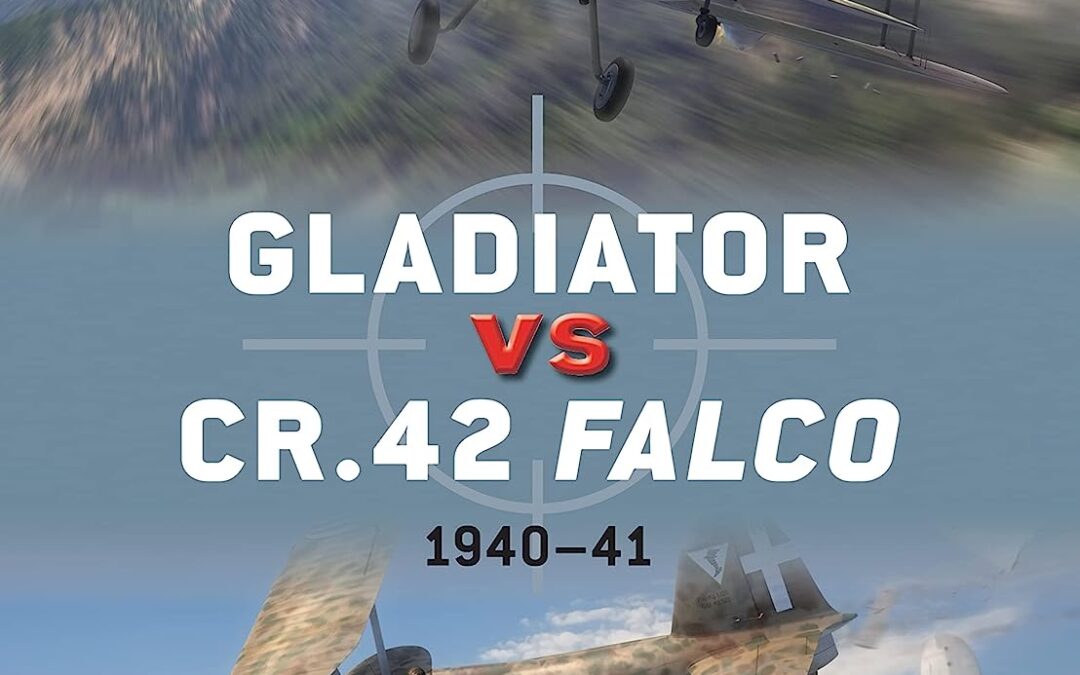
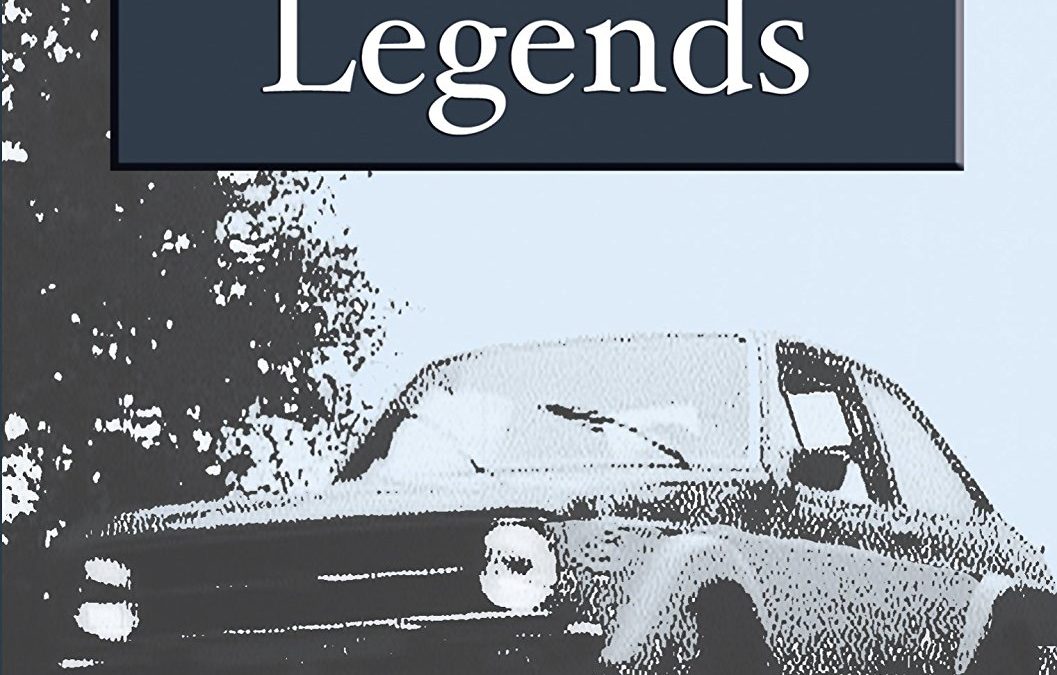
This stunning collection of historic rarities – part of the Ford Archive Gems series – brings together three classic rallying films from the 1960s and ‘70s to offer a unique insight into a golden era of rallying and a rare chance to learn the tricks of the trade from some of the greatest drivers ever to grace a special stage!
‘Rally Driving’, from 1973, is a masterclass in the art by Scandinavian legends Timo Makinen, Hannu Mikkola and England’s Roger Albert Clark. Join these stars of yesteryear as they demonstrate how to put a full-blooded Ford rally car through the most challenging of stages. From classroom to cockpit, this is a fascinating insight into the skills of these legends. It also features the wry observations of blockbusting writer Jilly Cooper.
In 1979’s ‘Special Stage’ renowned English sportscaster Dickie Davies spends four days learning to tackle a Ford Escort rally car alongside Clark. Staggering on-board footage of the master at work is brought to life by ‘co-driver’ Davies’ lively commentary as they tear around the forest stage.
‘Seven Survivors’ chronicles the 1963 East African Safari, which saw more than 80 cars set out for the 3,200 miles of competition over some of the toughest terrain in the world; just seven made it back. Rally greats including Pat Moss and Erik Carlsson are featured in this rare film.

After featuring the legendary eras of Group B and Group 4 rallying, McKlein Publishing has now dedicated a book to the early years of the sport. “Group 2 – The genesis of world rallying” is a comprehensive review of the 1950s and 1960s. Then rallying was a big adventure, capable of capturing the imagination and enthusiasm of a Europe that was rediscovering its romance with the motorcar. Rallies like the Monte Carlo, the Liège-Rome-Liège, the Acropolis, the RAC and the Rallye des Alpes were the jewels in the diadem of the sport. And new challenges arose like the East African Safari, the 1000 Lakes and the Tour de Corse.
All these events tested the crews that entered them to the very limits of speed and endurance. If the cars were less sophisticated than those we are familiar with in the 21st century, the skills to drive them quickly were perhaps of a higher order. Certainly the stars of rallying from the period of this book are still well-known names sixty years later – for example, Erik Carlsson, Timo Mäkinen, Paddy Hopkirk, Eugen Böhringer, Jean-Pierre Nicolas and Pat Moss. The same applies to the legendary cars that changed the sport such as the Mercedes 220SEb, Mini Cooper, Porsche 911, Lancia Fulvia and Alpine-Renault A110.
“Group 2 – The genesis of world rallying” is the first complete review of the sport in the period 1946 to 1972. Over 256 pages, author John Davenport, who was part of that era as a co-driver and journalist, tells the story of the evolution of a sport from being largely something for amateurs to one that was fully professional. It was a time of growth, excitement and adventure and is covered here by comprehensive annual reviews, interesting features – such as a report on the great long distance rallies of that era – and results from all rounds of the European Championship and the International Championship for Makes. All this is accompanied by the greatest McKlein images from that era.






















